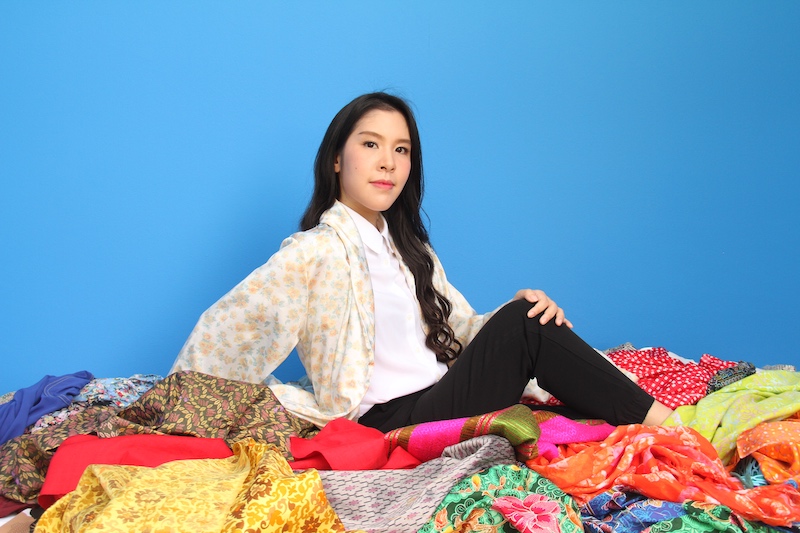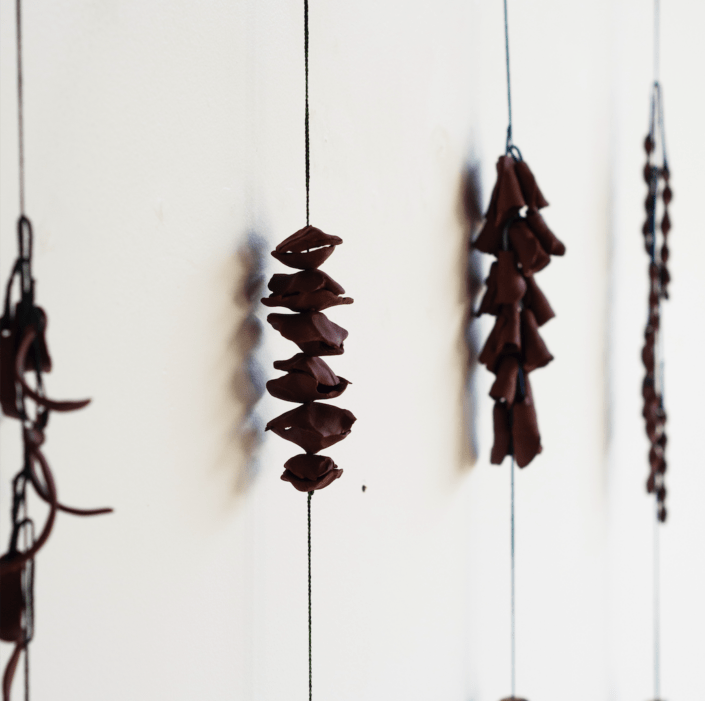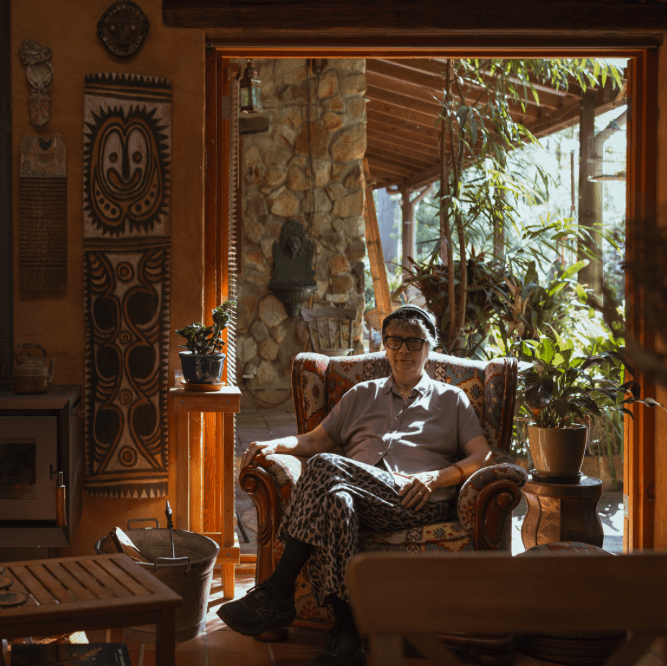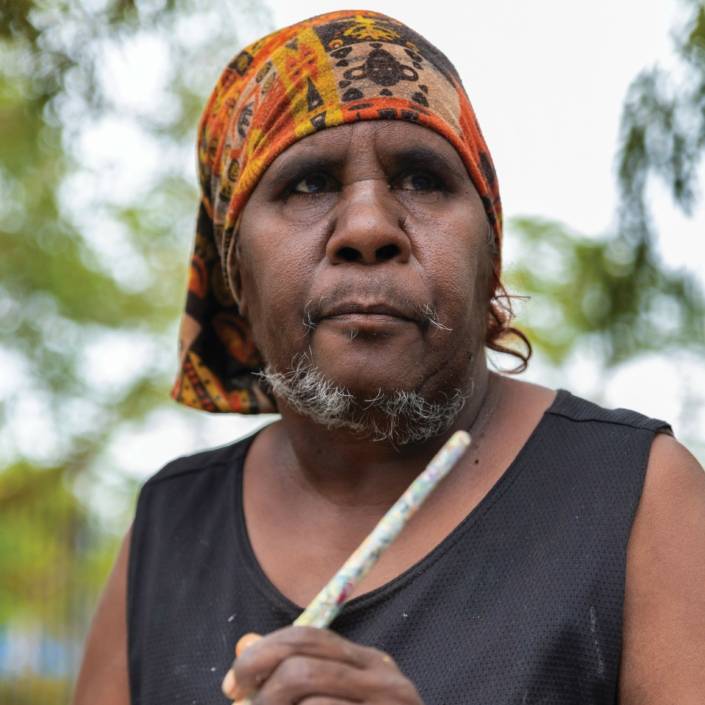Kawita Vatanajyankur: The Tools of Change
Kawita Vatanajyankur turns her own body into a factory machine because this is what labourers are turning into these days. They work every second and they have to be exactly right.
Words: Jane O’Sullivan
Photography: Attita Vatanajyankur
“At first, I always fail,” says Kawita Vatanajyankur about the weeks of practice she needs to turn her body into different tools and machines. Eventually she adjusts, she says. By the time she makes the final works, which she exhibits as videos and photographs, she appears strong and composed. But the threat of failure is always there. Because how can a human body survive as a machine?
Vatanajyankur’s new series, Performing Textiles, sees her turn herself into machines used in the textile industry. Some of these works were exhibited at Dunedin Art Gallery earlier in the year. Since then, the series has expanded to six videos, longer than any she has made before. They are currently in the Bangkok Art Biennale and will also be shown in Melbourne with Alcaston Gallery in October.
In one of these new textile works, Vatanajyankur hangs upside down and dips herself in a vat of lurid red dye. Another sees her leaping through a weaving loom to make fabric. (She will also perform Shuttle live at the Bangkok Art Biennale.) In Spinning Wheel, she spins head over heels, winding yarn.
“There are always elements of danger,” she says. “In Spinning Wheel, I had the needle from the spinning wheel sticking up from the ground, as a symbol that you have to continue and hold on as the machine. If you fall down, you get hurt and that’s the reality.”
It mirrors the experience of labourers in the modern global economy, and for that matter, anyone who uses money. “The human condition is about work and action and labour. This is what it is now.” she says. “You have to work.”
Vatanajyankur’s interest in labour and identity developed when she moved back to Bangkok, a few years after graduating from RMIT in Melbourne. She had spent 10 years living in Australia and, as she puts it, had grown up as a teenager and young woman in Australia. “When I came back to Thailand, I didn’t know anything anymore. It was as if I had to grow up again as a Thai woman, to fit into the society,” she says. Her uncertainty about cultural expectations led to a body of work about domestic labour, which included a video of herself as a dustpan and brush. It was, she says, less a comment about Thai women than an act of questioning “if this is what it should be, if this is what I should be, or not”.
This questioning approach has remained in her work – one reason why her practice has drawn such different responses from audiences around the world. In Japan, she says, women reacted to her machines by confessing feelings of inadequacy and the pressure to be better. In South America, audiences were more concerned with gender objectification and, in Thailand, consumerism. “I try to have different layers that are connected together so that once you look at it, it depends on your experience and your life,” she says.
This early, domestic work also cemented her interest in everyday labour. She went on to research industrial food production, visiting factories and interviewing the labourers who worked in them. “I started to be interested in today’s consumer materialism,” she says. “I thought, how could I turn myself into the machines or tools in the factories? Because this is what people, the labourers nowadays, are turning into. They work every second. It’s not just every day, it’s every second. They have to be exactly right.” This sort of pressure is captured in works like Egg Holder from 2016, where eggs fall into Vatanajyankur’s mouth. “I was like the box holding the eggs in the factory,” says the artist.
Vatanajyankur then became aware, through family connections, of labour exploitation in the fishing industry. “It’s a true form of slavery,” she explains, describing conditions where labourers are effectively jailed on boats. The media’s lack of interest in the issue has galvanised her as an artist. She wants her work to make people consider their responsibilities – for their own desires, and the labourers tasked with answering them.
Her current interest in the textile industry, also known for labour abuses, began on a return visit to New Zealand. She drove around the South Island in a campervan as part of a Dunedin Art Gallery residency. She visited the farm where she’d lived for a few months as a teenager, and then other wool-producing properties. She realised she knew little of Thailand’s own textile producing regions, and more travel followed.
These new performances, like her earlier works, are executed within clean, brightly coloured sets. The colours are very candy-like, like a package of food, she says. “You don’t at first think that it’s going to be quite violent, that it’s going to be confronting,” Vatanajyankur says. “I think the colours represent the package… but the actions of my performances are what’s really behind the thing.”
This article was originally published in Art Collector issue 86, OCT – DEC 2018.









